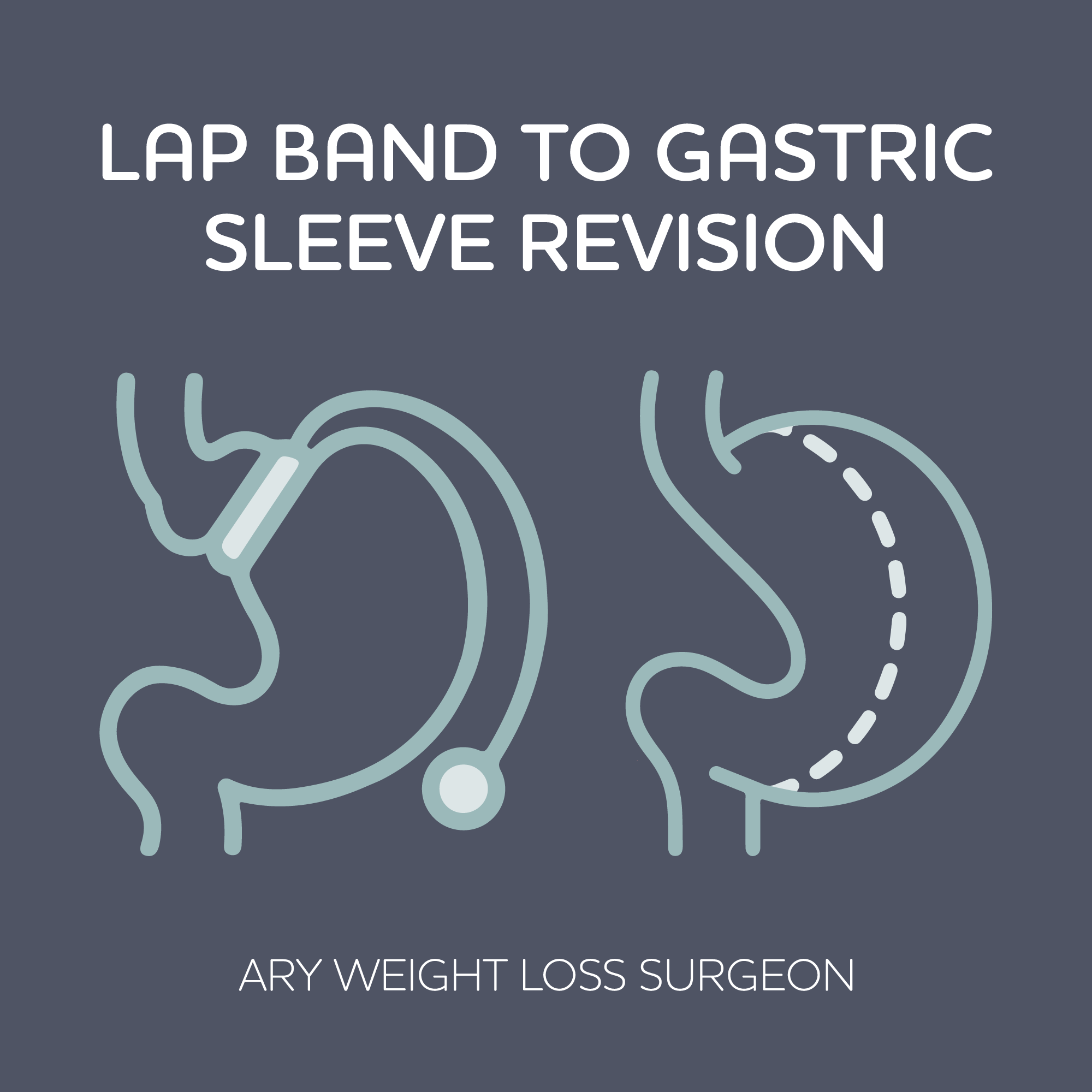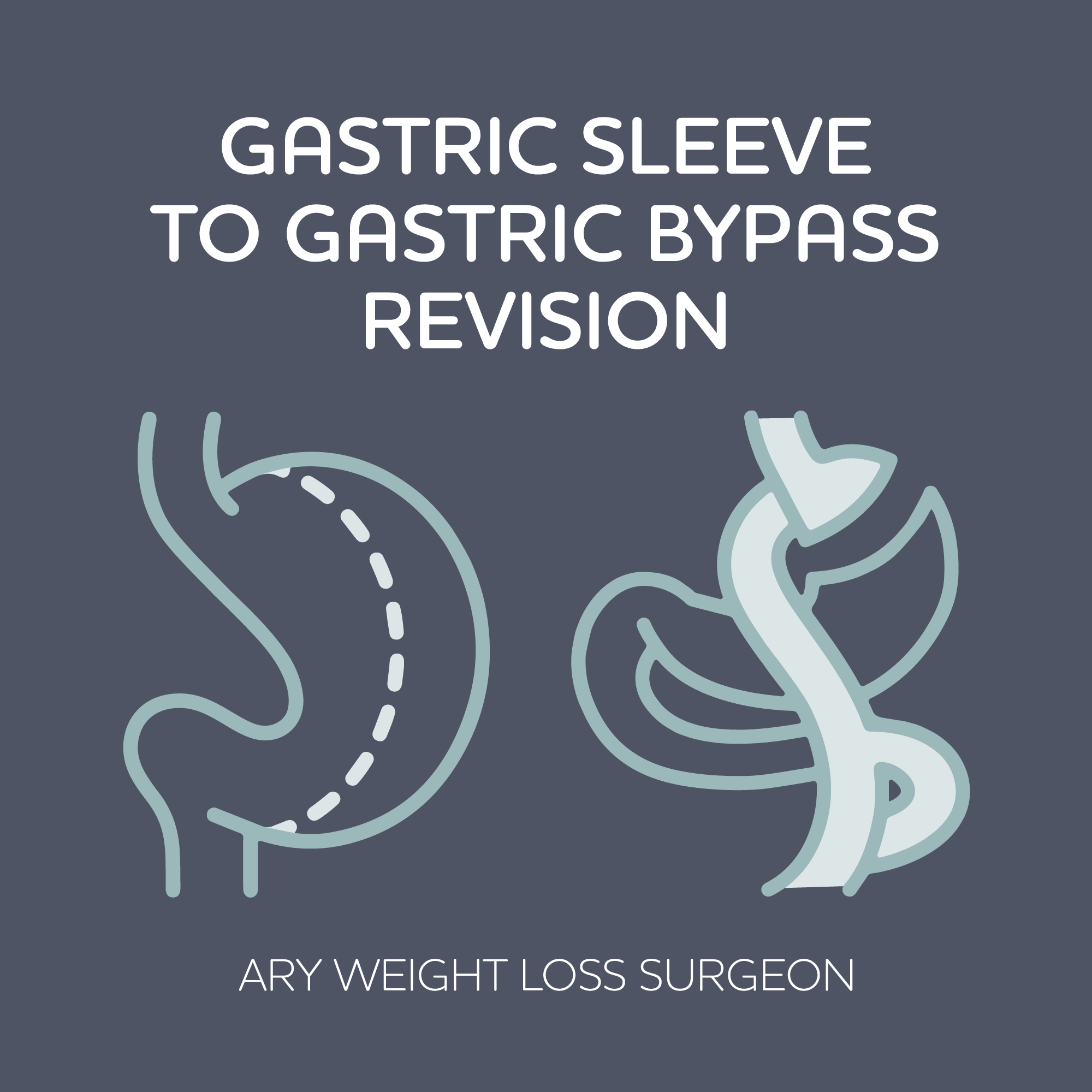 Vertical sleeve gastrectomy (VSG) is a surgical weight-loss procedure that involves the removal of a large portion of the stomach to create a smaller, sleeve-shaped stomach. The procedure is typically performed laparoscopically, using small incisions in the abdomen, and can lead to significant weight loss by reducing the amount of food that the stomach can hold and altering the production of hunger hormones.
Vertical sleeve gastrectomy (VSG) is a surgical weight-loss procedure that involves the removal of a large portion of the stomach to create a smaller, sleeve-shaped stomach. The procedure is typically performed laparoscopically, using small incisions in the abdomen, and can lead to significant weight loss by reducing the amount of food that the stomach can hold and altering the production of hunger hormones.
 Gastric bypass surgery is a weight loss surgery that involves creating a small pouch from the stomach and connecting it directly to the small intestine. This reduces the size of the stomach and reroutes food away from part of the small intestine, resulting in reduced calorie and nutrient absorption. The surgery is usually done laparoscopically, meaning it is minimally invasive and involves several small incisions rather than one large incision
Gastric bypass surgery is a weight loss surgery that involves creating a small pouch from the stomach and connecting it directly to the small intestine. This reduces the size of the stomach and reroutes food away from part of the small intestine, resulting in reduced calorie and nutrient absorption. The surgery is usually done laparoscopically, meaning it is minimally invasive and involves several small incisions rather than one large incision
 Lap band and gastric sleeve are both types of weight loss surgeries, but they are different in terms of the procedure and their effects on the body. Gastric sleeve surgery is considered more effective than lap band surgery for long-term weight loss and has a lower risk of complications. However, gastric sleeve is also a more invasive procedure and requires more recovery time than lap band surgery.
Lap band and gastric sleeve are both types of weight loss surgeries, but they are different in terms of the procedure and their effects on the body. Gastric sleeve surgery is considered more effective than lap band surgery for long-term weight loss and has a lower risk of complications. However, gastric sleeve is also a more invasive procedure and requires more recovery time than lap band surgery.
 A revision from a gastric sleeve to a gastric bypass is a surgical procedure that involves converting the existing gastric sleeve to a gastric bypass. This revision surgery is usually recommended when a patient has not achieved their desired weight loss or has experienced complications after undergoing a gastric sleeve surgery. The gastric bypass procedure is typically considered to be more effective in terms of weight loss compared to the gastric sleeve surgery.
A revision from a gastric sleeve to a gastric bypass is a surgical procedure that involves converting the existing gastric sleeve to a gastric bypass. This revision surgery is usually recommended when a patient has not achieved their desired weight loss or has experienced complications after undergoing a gastric sleeve surgery. The gastric bypass procedure is typically considered to be more effective in terms of weight loss compared to the gastric sleeve surgery.
Safe and secure weight loss surgery in Tijuana Mexico
Weight loss surgery, also known as bariatric surgery, is a surgical procedure that aims to help people who are severely obese to lose weight. In recent years, Mexico has become a popular destination for people from the United States and Canada who are seeking weight loss surgery at a lower cost.
There are several reasons why people choose to travel to Mexico for weight loss surgery. One of the main reasons is the cost. The cost of bariatric surgery in Mexico is generally much lower than it is in the United States or Canada. This can be a significant advantage for people who do not have insurance coverage for the procedure or who cannot afford the high cost of surgery in their home country.
However, there are some potential risks and drawbacks to consider when considering weight loss surgery in Mexico. For example, the quality of care and standards of medical practice in some Mexican hospitals may not be up to the same standards as in the United States or Canada. Additionally, patients may face language barriers, cultural differences, and logistical challenges when traveling to Mexico for surgery.
It is essential for anyone considering weight loss surgery in Mexico to thoroughly research the procedure and the medical facility they plan to use. Patients should also consult with their primary care physician and a bariatric specialist to discuss the risks and benefits of the procedure and to ensure that they are good candidates for the surgery.
In conclusion, weight loss surgery in Mexico can be an option for American and Canadian patients seeking lower costs, but it is important to carefully weigh the risks and benefits before making a decision. Patients should always prioritize their safety and well-being and seek the advice of qualified medical professionals before undergoing any surgical procedure.
the industry’s standard since the 1500s.[/ultimate_heading][ultimate_spacer height=”40″]
Weight loss surgery, also known as bariatric surgery, can have a range of benefits for obese patients. Here are some of the potential benefits:
- Significant weight loss: Weight loss surgery can help patients lose a significant amount of weight, which can improve their overall health and quality of life.
- Reduced risk of obesity-related health problems: Obesity is associated with a range of health problems, including type 2 diabetes, high blood pressure, heart disease, sleep apnea, and certain types of cancer. Weight loss surgery can help reduce the risk of these conditions.
- Improved mental health: Obesity can also have a negative impact on mental health, leading to depression, anxiety, and low self-esteem. Weight loss surgery can improve mental health outcomes and quality of life.
- Increased mobility: Carrying excess weight can make it difficult to move around and participate in physical activities. Weight loss surgery can help patients regain their mobility and engage in more physical activity.
- Improved fertility: Obesity can also have a negative impact on fertility. Weight loss surgery can improve fertility outcomes in obese patients.
- Reduced healthcare costs: Obesity-related health problems can be expensive to treat. Weight loss surgery can help reduce healthcare costs over the long term by reducing the need for expensive medical interventions.
Overall, weight loss surgery can have a range of benefits for obese American patients, improving their health, quality of life, and overall well-being. However, it is important to note that weight loss surgery is not a one-size-fits-all solution, and patients should carefully consider the risks and benefits before deciding to undergo surgery.
 Gastric sleeve procedure, also known as sleeve gastrectomy, is a type of weight loss surgery that involves removing a large portion of the stomach and creating a new, smaller stomach that is shaped like a sleeve or tube. The procedure is typically performed laparoscopically, which means that it is minimally invasive and involves only small incisions.
Gastric sleeve procedure, also known as sleeve gastrectomy, is a type of weight loss surgery that involves removing a large portion of the stomach and creating a new, smaller stomach that is shaped like a sleeve or tube. The procedure is typically performed laparoscopically, which means that it is minimally invasive and involves only small incisions.
The goal of the gastric sleeve procedure is to reduce the size of the stomach, which in turn helps to reduce the amount of food that a person can eat. The smaller stomach also produces less of the hunger hormone ghrelin, which can help to reduce feelings of hunger and make it easier for people to stick to a healthy diet.
The procedure typically takes around 1-2 hours to perform and requires a general anesthetic. During the surgery, the surgeon will make several small incisions in the abdomen and insert a laparoscope (a thin, flexible tube with a camera and light) and surgical instruments. The surgeon will then use the instruments to remove approximately 75-85% of the stomach, leaving behind a narrow tube-shaped stomach.
After the procedure, patients typically stay in the hospital for 1-2 days and are able to resume their normal activities within 2-4 weeks. However, it is important to follow a strict diet and exercise plan to ensure long-term weight loss success.
One of the benefits of the gastric sleeve procedure is that it can lead to significant weight loss – typically around 50-60% of excess body weight within the first two years after surgery. The procedure also has a lower risk of complications compared to other types of weight loss surgery, such as gastric bypass surgery.
However, like all surgical procedures, there are potential risks and complications associated with the gastric sleeve procedure. These may include bleeding, infection, blood clots, and anesthesia-related complications. Additionally, some patients may experience complications such as leaks or strictures in the newly created stomach, although these are rare.
Overall, the gastric sleeve procedure can be an effective tool for people who are struggling to lose weight through traditional methods such as diet and exercise. However, it is important to carefully consider the potential risks and benefits of the procedure, and to discuss these with a qualified healthcare provider.
 Gastric bypass is a surgical procedure that helps individuals with obesity lose weight by altering the digestive system. The surgery involves creating a small stomach pouch and rerouting the small intestine to the new pouch, which limits the amount of food that can be consumed and reduces the absorption of calories.
Gastric bypass is a surgical procedure that helps individuals with obesity lose weight by altering the digestive system. The surgery involves creating a small stomach pouch and rerouting the small intestine to the new pouch, which limits the amount of food that can be consumed and reduces the absorption of calories.
The gastric bypass procedure was first performed in 1967 by Dr. Edward Mason, who is considered the father of bariatric surgery. Since then, the procedure has undergone many modifications and advancements, but the basic principles remain the same.
The surgery is typically performed laparoscopically, which involves making small incisions in the abdomen and using a camera and specialized instruments to perform the procedure. The surgery can take several hours to complete, and patients are typically under general anesthesia.
During the surgery, the surgeon first divides the stomach into a smaller upper pouch and a larger lower pouch. The upper pouch is where food will initially be stored after eating, and it can hold about one ounce of food. The lower pouch is then bypassed, and the small intestine is rerouted to the upper pouch, creating a Y-shaped configuration.
This rerouting allows food to bypass most of the stomach and the first section of the small intestine, where most of the calories and nutrients are absorbed. As a result, patients feel full more quickly and absorb fewer calories from the food they eat.
After surgery, patients typically spend a few days in the hospital and may require several weeks of recovery time before returning to normal activities. They will need to follow a strict diet and exercise program to maintain their weight loss and prevent complications.
Gastric bypass surgery can be an effective treatment for obesity and related health conditions, such as type 2 diabetes, high blood pressure, and sleep apnea. However, like any surgery, it carries risks, such as bleeding, infection, and complications related to anesthesia. Patients considering gastric bypass should discuss the risks and benefits with their healthcare provider to determine if it is the right option for them.
 Lap band to gastric sleeve revision surgery is a type of weight loss surgery that involves converting a previous laparoscopic adjustable gastric banding (LAGB), commonly known as lap band, to a gastric sleeve. The surgery is done to address complications associated with the lap band or inadequate weight loss after the procedure.
Lap band to gastric sleeve revision surgery is a type of weight loss surgery that involves converting a previous laparoscopic adjustable gastric banding (LAGB), commonly known as lap band, to a gastric sleeve. The surgery is done to address complications associated with the lap band or inadequate weight loss after the procedure.
The lap band surgery involves placing a silicone band around the upper part of the stomach to create a small pouch, which restricts the amount of food the patient can eat. This leads to weight loss by limiting the amount of food the stomach can hold and creating a feeling of fullness. However, some patients experience complications such as band slippage, band erosion, or esophageal dilation, which can lead to pain, discomfort, and other health issues.
If a patient experiences such complications or has inadequate weight loss, revision surgery may be necessary. In the case of lap band to gastric sleeve revision surgery, the lap band is removed, and a gastric sleeve is created by removing a large portion of the stomach. This creates a smaller stomach pouch, which reduces the amount of food a patient can eat and results in weight loss.
The gastric sleeve surgery is considered a more effective weight loss procedure than the lap band surgery. It involves removing approximately 80% of the stomach, which reduces the production of hunger hormones, leading to a decrease in appetite. The gastric sleeve also results in significant weight loss and has a lower risk of complications than the lap band.
In conclusion, lap band to gastric sleeve revision surgery is a beneficial option for patients who have experienced complications or inadequate weight loss after lap band surgery. The gastric sleeve offers a more effective and safer weight loss option and can improve the patient’s overall health and quality of life. However, it is essential to discuss all options with a qualified bariatric surgeon and make an informed decision based on individual health conditions and goals.

Dr. Ary Zarate Certified Bariatric Surgeon
